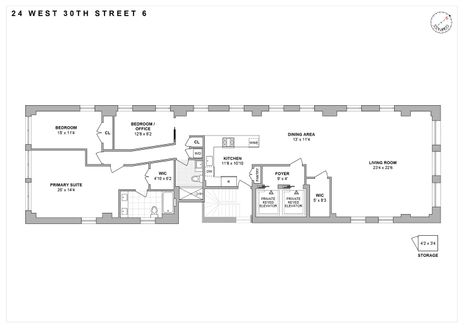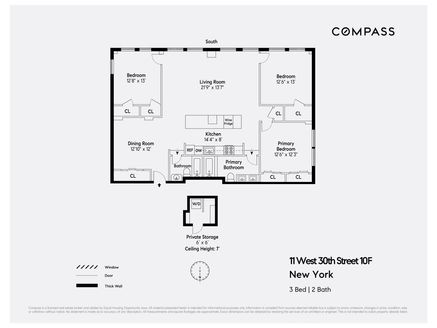Koreatown, Manhattan, NY
About Koreatown, Manhattan
Koreatown or “K-Town” is an enclave of Korean residents in the heart of Midtown, Manhattan. K-town is a small, yet well-known neighborhood that is famous for its amazing food and karaoke. It’s centered around 32nd Street between 6th Ave and Madison Ave. The exact northern and southern boundaries of the neighborhood are blurry, but it’s generally considered to be the area between 30th and 34th Streets.
K-Town is a bustling commercial and residential center that caters to both Korean communities and the professionals who work in surrounding areas. It’s not nearly as large as Chinatown or Flushing, however, it is known for its sophistication and centralized locale. Koreatown is a fun, hip neighborhood that welcomes all New Yorkers while maintaining an authentic ethnic identity.
History of Koreatown, Manhattan
Originally, Koreatown was a part of the Garment District. Many of the buildings in the area were created to house the factories used in the city’s prolific garment production. A Korean bookstore was opened in the neighborhood in the mid-1980s and several restaurants followed soon after. By the 2000s an influx of Korean residence began to flood to New York City and take residence in the midtown neighborhood. Nearby landmarks like Penn Station and the Empire State Building have kept K-Town a neighborhood with perennial popularity and allowed the local Korean business to thrive. Initially, K-Town was just a commercial district, but as the neighborhood has developed, Korean communities have begun to move and reside there as well.
Demographics of Koreatown, Manhattan
Koreatown is a small neighborhood that only covers about 9 to 12 blocks. There are approximately 1,700 residents of Koreatown. It is estimated that there are approximately 220,000 Korean Americans in the New York City Metropolitan Area and K-Town is the epicenter of that community. Approximately 50% of residents are white and 50% are Asian. Although Korean residents make up a large percentage of the Asian community, Chinese communities also have a large presence in the neighborhood. It’s a wealthy neighborhood and the meidan household income is just over $150,000.
Transportation in Koreatown, Manhattan
Being in the center of Manhattan, residents of K-Town have many options in terms of transportation. The 4, 5, 6, D, F, and N trains all make stops in or near K Town. The M1, M2, M5, Q32, and X10 trains also make stops in the area. The PATH train makes a stop at Herald Square and Penn Station is just 2 blocks away. This gives residents access to Amtrak, Metro-North, and many other railroads that lead out of the city.
Housing in K-Town, Manhattan
K-Town is a dense, urban neighborhood known for intimidating skyscrapers and squat residential apartment buildings. Luxury high rises are common, as are pre-war walk-ups with gorgeous sunlit lofts. Architecturally, it’s similar to the Garment District and contains stern row houses that have been converted into residential units from former factory buildings. It’s an expensive neighborhood, but it’s still somewhat cheaper than other parts of midtown. The median sale price of a home in K-Town is around $650,000.
Neighborhood Life in Koreatown, Manhattan
Koreatown is known for its shops, restaurants, and local culture. W. 32nd Street, commonly known as Korea Way, features dozens of Korean shops, restaurants, bookstores, nail salons, and more. K-Town is well known for its karaoke bars that are often frequented by tourists and amateur singers. It has an ultra-hip vibe after dark when all the neon signs of local businesses are set ablaze. When one is in the center of the neighborhood it feels like standing in downtown Seoul. Residents can choose to spend the evening in K-Town or venture into other parts of the city. It’s a versatile neighborhood that has a lot to offer residents and visitors.
Similar Neighborhoods to K-Town, Manhattan
Koreatown Real Estate Trends
K-Town is a relatively cheap subsection of Manhattan. It is primarily a commercial district and therefore property values are kept low by the abundance of foot traffic and restaurants. Although most of Midtown has a similar commercial density, the commercial activity in K-Town is especially dense. The NYC Korean Chamber of Commerce estimates that more than 100 businesses populate Korea Way alone. There are several high-end condos and co-ops like the Wilbraham on 30th and 5th Ave that feature more upscale residences. But many of the buildings in K-Town are former factory lofts converted to buildings that feature storefronts on the ground floor and residences on the floors above.
The Truth About Koreatown, Manhattan
How Safe is K-Town?
K-Town is very safe. Although the area was somewhat rough in the ’70s and ’80s, today it is much safer. The Midtown South Precinct of the NYPD patrols K-Town and has reported an overall decrease in crime over the past three decades. Midtown in general is very safe for a major commercial area. The sheer volume of traffic that comes in and out of the district results in some petty crime. But overall it has a low rate of violent crime and residents will feel safe as long as they are alert to the dangers in any city.
Are Schools in Koreatown Good?
There are no schools in Koreatown itself however residents may attend several highly rated NYC public schools in the area. For elementary school, students may attend either PS 33 Chelsea Prep on 9th Avenue or PS 116 Mary Lindley Murray School on East 33rd Street. For Middle and High School, students may attend other schools in these surrounding neighborhoods like the School of the Future High School in Gramercy or the NYC Lab Middle School for Collaborative Studies in Chelsea. Koreatown is mainly a commercial district and is not known to be a family neighborhood. However, there are several highly rated schools within the NYC public school system available to residents with children.
Popular Eateries in Koreatown, Manhattan
Things to Do in Koreatown, Manhattan
Walk down Korea Way and sample some of the amazing restaurants within the 2-3 block stretch of 32nd Street
Shoot some pool and sing some karaoke at Space Billiards on 32nd Street
Detoxify your body at the K-Town Sauna, the Korean owned sauna on 32nd Street is open to the public
Check out Koryo Bookstore, the shop is great for Korean book lovers and K-Pop fans alike
Take a tour of the Empire State Building, the iconic New York City skyscraper is right next to K-Town
Is Koreatown Dog-Friendly?
Not particularly. The traffic in K-Town is intense and it may be intimidating for many dogs. The greenspace is fairly limited, and the apartments tend to be small. Some buildings do allow pets, so small dogs can be manageable. But ultimately K-Town is a major commercial area in Midtown, Manhattan and it’s not the best neighborhood for pets.
Is Koreatown Good for Cyclists?
No Koreatown is not a great neighborhood for cyclists. The traffic can be dense, and cyclists will be competing for bike lanes with couriers and food carts. Those with experience riding in Midtown traffic will be comfortable, but ultimately it’s not a great neighborhood for cyclists in general. The transportation options are abundant and there is so much within walking distance, most residents choose to travel on foot.
3 Things to Know Before Moving to K-Town
K-Town’s high concentration of restaurants and bars attracts rodents and noise. Keep this in mind if you’re looking at a unit above a storefront.
Some restaurants in the neighborhood are open 24/7 so those looking for a quiet, secluded area should look elsewhere.
Penn Station and Herald Square Stations get very crowded during rush hour, so plan accordingly

